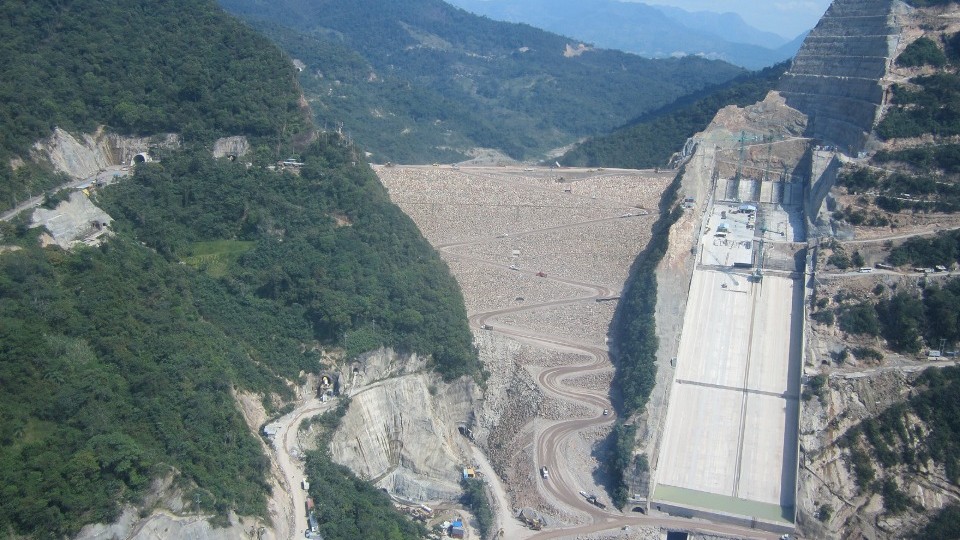Third Bosphorus bridge – foundation monitoring works – Turkey

The 3rd Bosphorus Bridge will be the first of its kind in many respects. Once completed, the bridge will have the following features: The widest suspension bridge of the world with a width of 59 meters; the longest suspension bridge of the world with a rail system of 1,048 meters; a suspension bridge with the […]
Nam Gnouang Dam – Laos

The NG Dam, 480 m wide and 65 m high, has created the NG Reservoir, which stores the rains that fall in the area from May-October each year. The dam has five gates that are opened only to discharge water to avoid flood events during the wet season. In normal operation the dam releases water […]
The new Panama Canal

The project for the enlargement of the Panama Canal is nowadays considered one of the most important civil engineering works. The project includes the building of two new series of gates, on both the Pacific and the Atlantic side, to respond in a suitable and efficient way to the development of the maritime transportation industry. […]
Sogamoso hydroelectric project – Colombia

Sisgeo worked on the hydroelectric project on Sogamoso river, through Monitoriza, a company of Sisgeo group. Sisgeo supplied and installed all the equipments necessary for this project, located in the north-western area of Colombia, at about 40 km from Bucaramanga. The project concerns the building of a dam 190mt high and 300mt long, of a […]
Monitoring works for the 2014 Sochi Winter Olympic Games – Russia

Sisgeo, thanks to the collaboration with its Russian partners AGT Systems and GPIKO, furnished and installed all the equipments necessary to monitor the most important road and railway works that are under construction in Sochi area, that is the neural centre of 2014 Winter Olympics.The monitored works are: retaining walls for the protection of roads, […]
El Quimbo Hydroelectric project – Colombia

Impregilo is realising in Colombia the hydroelectric power plant of El Quimbo on Magdalena river (in Huila region), on behalf of EMGESA, that is the biggest electric company of the country. The agreement is worth about 250ml of euro. The power plant will have an installed capacity of 400MW. The project includes the building of […]
Sakhalin-2 project Russia

The Sakhalin II project is an oil and gas development project on Sakhalin Island and immediately offshore, in the Sea of Okhotsk, from two fields: Piltun-Astokhskoye and Lunskoye. Piltun-Astokhskoye is primarily an oil field, and Lunskoye is primarily a gas field. The project has been met with heavy criticism over the potential environmental impact, which […]
Cleaning-up project of Panama City and Bay

The cleaning-up project of Panama City and Bay includes: Construction of Health Service networks Construction and rehabilitation of Collectors and Drive lines Interceptor system Plant for wastewater treatment. These elements will be developed to collect, transport and treat wastewater of Panama City which is currently discharged directly into the bay or rivers and streams in […]
FAQ#111 – Why I cannot read correctly my 4-20mA current loop gauge?
It could be a problem connected to the power supply given by the readout or logger. When the power supply is in the current loop (2-wire gauge) it is necessary to consider the effect of voltage drop across the shunt resistor on the voltage applied to the gauge. For example, suppose a 4-20mA gauge requires […]
FAQ#037 – Quel est le coefficient d’expansion thermique linéaire du câble plat gradué (ruban) des indicateurs de niveau d’eau (WLI) et des sondes de tassement BRS?
Le coefficient d’expansion thermique linéaire du câble plat gradué est de 16x10E-6 m/ °C.
FAQ#033 – J’ai reçu le rapport d’étalonnage d’un piézomètre. Le Facteur thermique K n’est pas indiqué. Comment puis-je procéder?
Si la valeur n’est pas indiquée dans le rapport d’étalonnage, vous devez utiliser la formule suivante : K = -1 chiffre/°C. Pour chaque degré d’augmentation de température, vous devez diminuer d’une unité.
FAQ#019 – Quelle est la différence entre les filtres HAE (High-Air Entry) et les filtres LAE (Low-Air Entry)?
Les filtres HAE (High Air Entry) sont normalement utilisés pour surveiller la pression interstitielles dans les barrages à noyau en argile et les sols à faible perméabilité saturés. « High air entry » signifie qu’il y a une haute résistance à l’entrée d’air lorsque le filtre est saturé. La tension de surface de l’eau dans […]
